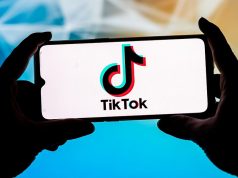In the ninth post in this series, Nigel Malone shares the contents of another of his favourite business keynote slides, drawn from a cross-section of sources that includes some of the great business, brand and military planners of all time.
Also in this series:
- Favourite Slide #1: The Hedgehog
- Favourite Slide #2: Six Buying Roles
- Favourite Slide #3: Creative Development
- Favourite Slide #4: Values
- Favourite Slide #5: Message Development
- Favourite Slide #6: Competition
- Favourite Slide #7: Positioning
- Favourite Slide #8: The Sales Funnel
- Favourite Slide #9: Integrated Communication
- Favourite Slide #10: The Creative Brief
Favourite Slides #9: Integrated Communication
‘Integrated’ has been a buzz word in agency land for more than a decade, and is still the catch-cry for many a creative shop and marketing department.
It all started with the rise of the internet and the downturn in dominance of traditional advertising media such as print and television. Combined with this, consumers were becoming less trusting of traditional advertising. Agencies and advertisers began to look for new ways to influence the consumer. Their methods ranged from the ridiculous to the subliminal and included PR, experiential and the social media we are so familiar with today.
In an attempt to regain their relevance, advertising agencies packaged up their approach to this new media-neutral landscape as ‘integrated communication’ and sold it to advertisers as the next big thing.
Despite such a long time in the sun, very few agencies or marketing departments have mastered the art of integrated communications — in theory or practice.
Some believe it is simply utilising all the different channels of communication available. To an extent this is true, but at its heart, integrated communication hinges on a single, pivotal creative proposition. This ‘big idea’, as some like to call, is then applied to a spectrum of ‘marketing drivers’ that ensure engagement with the consumer on every possible level in the sales process.
Activation Drivers
These are methods to accelerate or close the sale, especially with someone who might be sitting on the fence and need a small push to get them over the line.
Awareness Drivers
In favourite slide #8 I discussed the importance of filling the sales funnel with as many prospects as possible, usually done with the most mainstream media available and highlighting the ‘brand’ story.
Buzz Drivers
This is about creating hype around your offering in non-traditional advertising media, often more trusted by the consumer for its apparent neutrality.
Emotional Drivers
Being seen as a good corporate citizen is a given today and a means to attract consumers that align with your ‘cause’ and or organisational values (favourite slide #4).
Experience Drivers
These are means to allow your potential consumers to try, test drive, taste, or free trial your offering before they buy. It’s critical in getting them to prefer your product over the competition.
Product Drivers
These are about telling the product story in all its glory and fine detail, and much more ‘retail’-focused than the ‘brand’ story told by awareness drivers.
I like the integrated model because it’s not just for multinational advertisers — the model is equally scalable for a small or startup company. Simply focus on the big idea, the core message you wish to convey, and ensure it drives every piece of communication/engagement with your potential customer.
Done well, the end result is a consistent, efficient and powerful method of communication.
Nigel Malone is a freelance brand strategist and writer, with particular expertise in the fields of tourism, finance, technology, sustainability and social change. Connect with him on Linkedin http://au.linkedin.com/in/nigelmalone






![Five essential ingredients for a humming homepage with James Tuckerman [FREE REPORT]](https://anthillonline.com/wp-content/uploads/2015/07/homepage-checklist-1680-01-copy-300x194.png)
![Ever considered crowdfunding? [FREE REPORT]](https://anthillonline.com/wp-content/uploads/2017/03/liz-wald-100x75.png)
![How to build a retail empire with James Webber [FREE REPORT]](https://anthillonline.com/wp-content/uploads/2015/06/james-webber-instagram-memes-01-100x75.jpg)
![The Facebook Honey Trap with James Tuckerman [CHEAT SHEET]](https://anthillonline.com/wp-content/uploads/2015/11/Screen-Shot-2015-11-26-at-11.34.14-100x75.png)
![How to give good headlines, and create emails that get opened [CHEAT SHEET]](https://anthillonline.com/wp-content/uploads/2013/11/7-steps-cheatsheet-3d-cover-nuova--100x75.png)
![How to zig when everyone else is zagging, with Julio De Laffitte [CHEAT SHEET]](https://anthillonline.com/wp-content/uploads/2015/08/Capture2-100x75.jpg)

![A bra that can detect breast cancer [VIDEO]](https://anthillonline.com/wp-content/uploads/2012/10/EarlyDectectionBra.jpg)
![Look in the mirror. Do you see what everyone else sees? Chances are, you don’t [VIDEO]](https://anthillonline.com/wp-content/uploads/2013/04/DoveBeautySketches-300x350.jpg)
![Seven steps to crafting the perfect email, with James Tuckerman [FREE REPORT]](https://anthillonline.com/wp-content/uploads/2015/08/7-steps-cheatsheet-3d-cover-nuova--300x194.png)
![Want more credibility and influence? Unlock the 12 principles of persuasion checklist [FREE DOWNLOAD]](https://anthillonline.com/wp-content/uploads/2016/03/james-persuasion-and-influence-nfsu-02.pdf-Box-2016-03-24-15-09-44-100x75.png)
![Need more leads? Here are five strategies [FREE DOWNLOAD]](https://anthillonline.com/wp-content/uploads/2016/04/james-FIVE-SIMPLE-STRATEGIES-TO-GET-MORE-LEADS-01-06.pdf-Box-2016-05-13-15-49-32-100x75.png)
![Four principles to creating dedicated customers…or zombie loyalists with Peter Shankman [Free report]](https://anthillonline.com/wp-content/uploads/2015/11/Screen-Shot-2015-11-26-at-11.16.26-100x75.png)
![Learn how to generate more leads in one month than most competitors would in one year! [FREE REPORT]](https://anthillonline.com/wp-content/uploads/2015/08/Capture4-100x75.jpg)
![New Zealand’s Xero eyes US IPO, further disruption as subscribers increase [INFOGRAPHIC]](https://anthillonline.com/wp-content/uploads/2014/07/sruuuuujana-212x194.png)
![Ever wonder if your ‘content marketing’ is really just crap? You gotta see this! [INFOGRAPHIC]](https://anthillonline.com/wp-content/uploads/2014/08/content-100x75.jpg)
![7 Business Lessons From Game of Thrones [INFOGRAPHIC]](https://anthillonline.com/wp-content/uploads/2014/10/infographic-games-of-thrones-041-100x75.jpg)
![How to build your own Media Empire… In seven steps with Nathan Chan [INFOGRAPHIC]](https://anthillonline.com/wp-content/uploads/2014/10/Nathan-Chan-Infographic-e1413419529176-100x75.jpg)
![5 Business Lessons From Tinder [INFOGRAPHIC]](https://anthillonline.com/wp-content/uploads/2014/10/Tinder-Elegant-Infographic-100x75.jpg)



